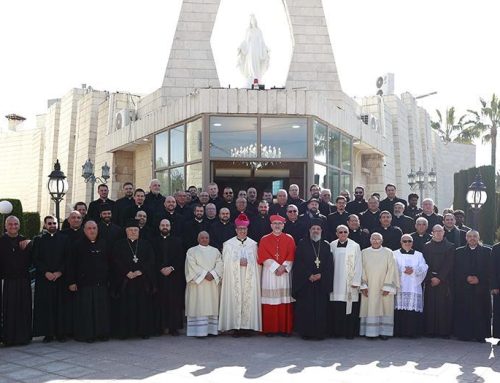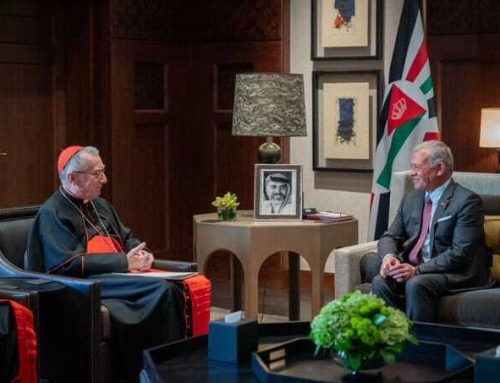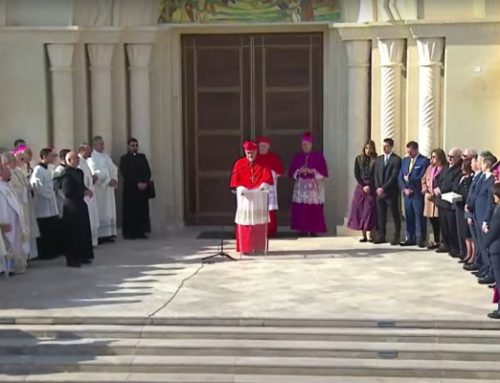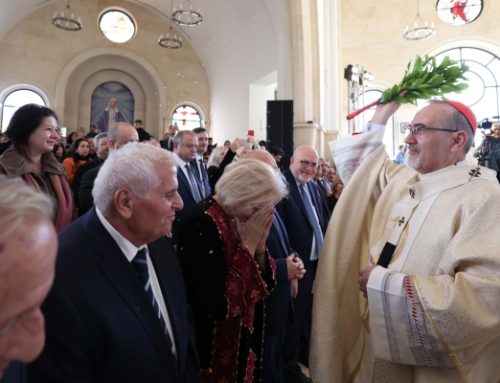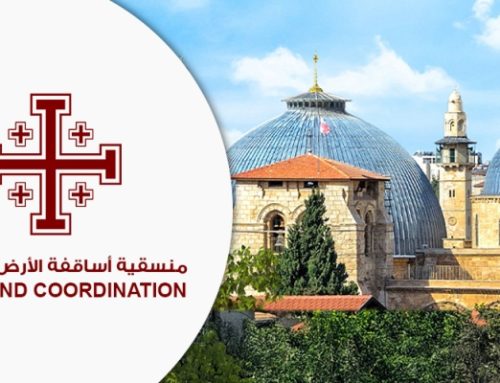Stepping onto the soil of the Holy Land breaks open channels of memory and recognition like no other place on earth possibly can.
Stepping onto the soil of the Holy Land breaks open channels of memory and recognition like no other place on earth possibly can. You stand in places that are currently called the Hashemite Kingdom of Jordan, the State of Israel, the Palestinian Autonomous Territories or the Occupied Palestinian Territory, but you know that this is also Judah/Judea, Samaria, Decapolis, Ammon, Perea, the Galilee, the land of Canaan.
Once you touch these places, the physical and mental connection becomes permanently cemented. It doesn’t matter if you learned of them from the Torah, the Koran, or the Bible, the connections in your memory now run vividly deep and you know that it will forever change the way you experience those ancient scriptures. At a more fundamental level, you come to realize that somehow, irretrievably, you belong to this land.
Touching the people of the Holy Land opens up similar recognition, but much more primal; a reality that drives a barbed hook deep into your core. These people who today call themselves Israelis and Palestinians are also Arabs and Hebrews – Jews, Christians and Muslims; many who trace their local heritage back centuries or even thousands of years. In other words, they are collectively “Semitic”; children of Noah’s son Shem. In other words, they are sons and daughters of Abraham, all tracing their faith in God to a common historical and spiritual root. As you spend time with them and listen to their stories, it doesn’t take you long to realize that (like your relationship to the land) you also belong to them.
These connections – to this land and to these people – make the present-day conflicts in Palestine and Israel all the more painful and tragic. These are your people and mine, hurting and killing each other over land to which we all belong, but of which none of us really “own”. Standing in the Holy Land has a way of fusing together thousands of years into a single instant, along with the sickening reality that “our” people have waged countless wars against each other and committed unspeakable atrocities over claims to this land that ultimately “belongs” only to God. Even more sickening is that the wars and atrocities continue to this day; the land is still being taken and people are still being driven from their homes, families and livelihood by force and violence. Attacks and counter-attacks kill and maim and drive deeper and deeper wedges between the people. Time in the Holy Land marches both backward and forward; you need only open the Torah, the Koran or the Bible to see the links of the present actions to those of the past.
Listening strictly to the present-day news media or to the agendas of our governments, the easy response to all of this is to take the position of one side and demonize the other – “they” are the oppressors, “they” are the terrorists,” they” are the instigators, “we” are only protecting ourselves. The wounds are fresh and the battle lines make logical sense when viewed from only the context of today. The far more difficult response is to look through the lens of time and within the context of our shared faith. From that perspective can be found a middle ground; a bridge between our warring brothers and sisters. Through that lens we can gain knowledge from the lessons of our shared past, realize the wisdom of our shared God, and pursue the necessary work of forgiveness, reconciliation and cooperation.
Standing on that bridge are the Holy Land Christians. In their hands is a lens provided by their Master. It is often and sadly forgotten that there are “Living Stones“, Christians, who still live among the ancient stones in the Holy Land. This is the very birthplace of Christ and of Christianity; and these, largely, Palestinian Arabs have lived for (and often died for) their faith in Christ since the days of the first disciples. Frighteningly, their populations are rapidly diminishing and they are often forgotten amidst the loud voices and violent actions of the conflict (although they are caught in the same injustice and suffer the same fears and indignities as their Muslim and Jewish neighbors). But they live by a simple, indelible truth – “Thou shalt love the Lord thy God with all thy heart, and withall thy soul, and with all thy mind. This is the first and greatest commandment. And the second is like unto it, Thou shalt love thy neighbor as thyself. On these two commandments hang all the law and the prophets.” Matthew 22:36-40
This truth is why our Christian brothers and sisters in the Holy Land go to Christ first before they pick up a rock or launch a missile or strap on a suicide belt; when people all around them are doing those things. This truth allows them to stand on the bridge and serve as a force for peace in what often seems like a hopeless, endless cycle of war. The lens they carry shines a light into the only way out of this conflict – Love your neighbor as yourself. Live with compassion … empathy … repentance … forgiveness … and reconciliation; and my Spirit will be with you, always.
In her book, Francis and the San Damiano Cross, Susan Saint Sing poses a question that holds great meaning in the Holy Land conflict, “What if peace is a force, a quiet force but a powerful one? What if this force is capable of inciting a ‘riot’ of more peace? What if the force of peace is greater than the force of war?” The age-old problems in the Holy Land will not be solved without the pure and clear ethics of Jesus Christ serving as a peaceful counterweight to the force of war. Peace, security, justice and prosperity will only come to all of the peoples of the Holy Land when the ethics of Christ flow through their thoughts and hearts and actions on a daily basis. That is only going to happen if someone is there serving on the bridge.

